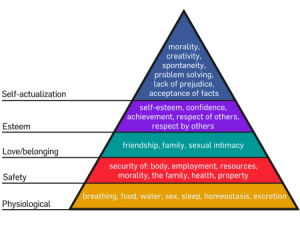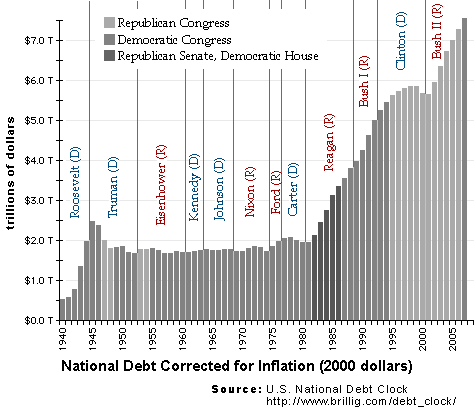Human Nature causes law breaking
The human concept of morality poses upon us some interesting quandaries. We create laws to regulate behaviors and protect the innocent, but in some cases these laws actually cause more issues then they solve.
As I pointed out earlier the economic impact of the Drug Trade alone is well into the Billions if not over a Trillion dollars a year in the United States alone. This is money that is spent because Federal Law says that the mere use and in some cases possesion of certain drugs is illegal due to morality.
The number of drunk driving deaths in the United States was 11,773 in 2008. This was a 9.7% increase from 2007. These are deaths that we live with because by 1933 the cost of enforcing Prohibition Laws, coupled with the sheer amount of illegal activities surrounding alcohol made it impossible to enforce. It is estimated that there were between 30,000 to 100,000 Speakeasies in New York in 1933. In modern day New York there are only about 20,000 bars AND restaurants in New York City. This is despite a nearly doubling of the population in the City itself.
Take a look at this map which covers 176 bars in the East Village alone. Now imagine what up to five times as many bars would look like. I’m pretty sure that Police Enforcement in that day and age must have consisted of walking down the street, looking for the unmarked “empty” storefronts and simply kicking down the door. The number of false positives under such a method would have been remarkably low.
“Many laws as certainly make bad men, as bad men make many laws.” ~Walter Savage Landor, Imaginary Conversations
That certain laws inherently cause crimes has pretty much been a given throughout history. Speed Limit laws are a great example. I know that I regularly travel 5-10 miles over the posted limit. Even though it may be perfectly safe for me to travel at that faster speed, I’m still breaking the law. This happens so much that Police departments across the United States tends to give an unofficial 3-5 mile grace. Or if all the traffic around you is going faster, they’re more likely to pull someone over for not going with the flow of traffic.
“The more laws the more offenders.” ~Thomas Fuller, Gnomologia, 1732
In another example, Oregon’s Cell Phone law goes into effect January 1st, 2010. In short, talking on a cell phone without a hands free device will result in a Class D traffic-violation with a minimum $142 fine. The fine amount and exact classification will change depending on the jurisdiction.
Both my wife and I believed this law already to be in effect. But I also found that it only marginally changed my cell phone usage behaviors in the car. Now that I know for sure that the law goes into affect tomorrow, this may be a different story.
Another example is Age of Consent laws. In the United States the age of consent is defined between 16 to 18 depending on the state. Yet in Europe and Latin America, the age is 13-16, which Chile being the only country at 18. Here is where things get weird. According to this chart in 1880, the Age of Consent in almost every State was either ten or twelve, with Delaware at seven! Universally that age increased to the 16-18 range by the 1920’s, but in many cases it was moved from 18 back down to 16.
The Age of Consent is aimed at “protecting” innocent and immature children. The definition of innocent and immature is at best a crap shoot as it varies from person to person. Even what actions would make someone immature or mature vary and could be seen in the same person within a few minutes of each other.
Not counting in the Morality arguments, Age of Consent still has one more huge factor to take into account. This being human nature AKA basic psychology. In 1943 Abraham Maslow wrote “A Theory of Human Motivation.” Included in this paper was the theory of the hierarchy of needs.

This chart was borrowed from Wikipedia. I have been utterly facinated with this theory ever since it was introduced to me in High School. There are hundreds of variations on this chart, which all pretty much manage to differ only on wording and color. To interpret this chart the needs at the bottom have to be met before the next level can even be met.
Note that the third level puts sexual intimacy before needs such as self-esteem, confidence, achievement, respect of self and lack of prejudice! To be fair not every need on every level needs to be met by every person to advance to the next level. Add in the fact that in the past ten years it’s pretty much become accepted in Psychology that both sexes are hardwired to be attracted to younger members of the opposite as a matter of Evolution, and we have a recipe for disaster in light of these Age of Consent Laws.
So in this case people are torn between three things, their morality, societies laws, and their own psychological needs. People can barely keep to the speed limit which is a fairly black or white issue in comparison! Who in their right mind really expects the average person to be able to wrestle with questions on this level when philosophers have been asking these kinds of questions for thousands of years?
The primary reason in the slippage of the Age of Consent from 13-14 to 16-18 being fictional news reports in a British Newspaper about forced child prostitution in 1885. But what continues to be covered up is that the primary factor behind child prostitution (and prostitution of any form) is economic. Prostitution drastically decreased during the 1870-1910 period due to Industrial Revolution which grew fastest in the United States and led directly to a higher amount of wealth across all sections of the population. This had to have a much bigger effect then any laws put in place.
So now we have a supply and demand situation that leads directly to child abuse and it’s associated side effects. And worse of all, Child Prostitution hasn’t gone away. It’s simply been moved to third world countries were it once again makes economic sense.
The key point here is that humans will break the law after a risk analyst and nothing is going to stop that, no matter the punishment. Millions of years of Evolution can not be stopped in a couple of hundred years, and it can be argued that doing so could be more detrimental to the individual then anything else.
I’m not sure what the answer is. Perhaps 1985 type mind control techniques do make sense for the betterment of society. Or perhaps the Golden Rule or the Ethics of Reciprocity should become law unto themselves. Maybe the Age of Consent should be revised downwards and parents forced to take a more active interest in their Children’s lives and development?



